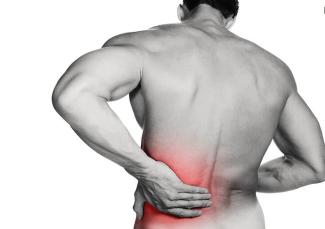
Battling Low Back Pain
At some point in their lives most adults in the US will experience a bout of low back pain. Without addressing the root cause these symptoms can become chronic in nature and create difficulties with daily activities such as yard work, laundry or walking.
More recently with the COVID-19 pandemic, many people have found themselves sitting more frequently, without a gym to workout in or simply cannot find the motivation to exercise. It is more important than ever to make some small changes to prevent an incident of low back pain and the devastating effects it can have in one’s life.
So what can cause low back pain? There are many structures in the low back (or lumbar spine) including the 5 lumbar vertebrae, facet joints, intervertebral discs, spinal nerve roots, sacroiliac (SI) joint, ligaments, muscles and their associated tendons that can become injured or irritated. Typically, the pain is a signal that there is dysfunction, which can be in the area of pain or in an adjacent region of the body. For example, decreased hip mobility can result in the body compensating by moving too much in the lumbar spine leading to irritation of the facet joints.
Another cause of lumbar pain and dysfunction is muscular tightness and weakness. Being in any one position for prolonged periods of time (e.g. sitting for hours) can result in the body making adaptations to that position. When sitting for long periods of time, we find tightness in the hip flexors and lumbar musculature. Tight hip flexors pull the pelvis anteriorly (forward) causing overstretching of the abdominals and glutes which causes them to weaken.
Physical therapists, experts of musculoskeletal issues, should be your first point of contact when experiencing an episode of low back pain. Your PT will be able to perform a full assessment to determine the cause of your low back pain and prescribe appropriate exercises to address your pain. Unless there are red flags for more serious issues, an MRI is not necessary. Unnecessary imaging can often lead to anxiety or confusion with big, scary sounding words like spondylosis, osteoarthritis, degenerative changes, disc bulge or spinal stenosis. Most of these terms simply refer to age-related changes or wear and tear over time and are not serious in nature.
For the sake of your back and overall well-being, it is beneficial to begin or continue exercising and moving your body. There are many great modes of exercising that can benefit anyone with low back pain. Below are some tips/suggestions for exercising at home during the COVID-19 pandemic. All exercises require little to no equipment.
- Change positions frequently
- Begin a stretching/yoga routine
- Walking
- Hiking
- Biking
- Swimming
- Core strengthening/stabilization
- Hip mobility
- Thoracic (mid back) mobility
If pain occurs with any exercise or activity or you would like more information regarding low back pain, please consult your local Doctor of Physical Therapy. Physical Therapists improve the way you move!

